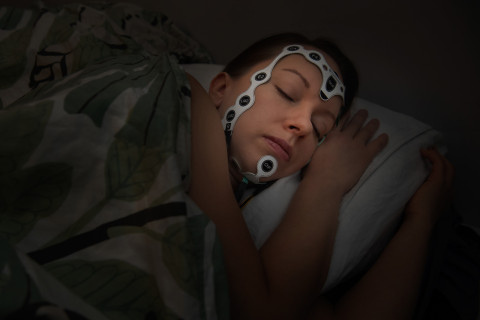ABSTRACT
Currently, the diagnosis of sleep disorders relies on polysomnographic recordings with a time-consuming manual analysis with low reliability between different manual scorers. Throughout the night, sleep stages are identified manually in non-overlapping 30-second epochs starting from the onset of the recording based on electroencephalography (EEG), electro-oculography (EOG), and chin electromyography (EMG) signals which require meticulous placement of electrodes. Moreover, the diagnosis of many sleep disorders relies on outdated guidelines. When assessing the severity of obstructive sleep apnoea (OSA), the patients are classified based on thresholds of the apnoea-hypopnea index (AHI), i.e. the number of respiratory disruptions during sleep. These thresholds are not fully based on solid scientific evidence and remain the same across different measurement techniques. The AHI does not correlate well with daytime symptoms and severe health outcomes. Moreover, OSA often leads to sleep fragmentation but its extent is often neglected in the diagnosis of OSA.
This thesis aimed to improve the diagnosis of sleep disorders by employing state-of-the-art computational and machine learning methods. The first aim was to simulate various AHI thresholds and optimize the severity classification with regards to OSA-related all-cause mortality. The second aim was to develop a comprehensive deep learning-based method for automatic sleep staging from a combination of EEG and EOG recordings, from a single-channel EEG, and finally, from a photoplethysmogram (PPG) measured with a finger pulse oximeter. The final aim was to implement the developed deep learning-based sleep staging to evaluate the sleep architecture in more detail to better identify sleep stage transitions automatically.
This thesis revealed that the current OSA severity classification is not optimal for assessing the risk for OSA-related all-cause mortality. Instead of the currently used AHI thresholds (5-15-30 1/h) for mild, moderate, and severe OSA, the combination of 3-9-24 1/h would better reflect the risk of all-cause mortality when the AHI is determined from home-based polygraphic recordings. However, more detailed measures are required alongside the AHI for a comprehensive assessment of OSA severity. In the future, automated assessment of sleep fragmentation related to OSA and other respiratory event-based or hypoxemia-based parameters could supplement the severity estimation of OSA.
The developed deep learning-based sleep staging method was highly accurate with both the EEG+EOG combination and with a single frontal EEG channel. The methods achieved similar reliability as manual scoring in a clinical dataset of patients with suspected OSA. Moreover, deep learning enabled sleep staging with a moderate epoch-to-epoch agreement to manual sleep staging from a PPG signal measured with a finger pulse oximeter and achieved a reasonably accurate determination of total sleep time. Deep learning further enabled a more detailed assessment of sleep architecture and sleep continuity. The more detailed approach enabled the deep learning-based sleep staging to better reveal the highly fragmented sleep architecture of individuals suffering from severe OSA.
In conclusion, the results of this thesis demonstrated that the severity assessment of OSA should be revised, sleep staging can be conducted fully automatically from even a single EEG channel or a photoplethysmogram and deep learning-based sleep staging may represent the solution for a more comprehensive assessment of sleep architecture. The results could significantly enhance the current diagnostic practice by making the analysis of sleep recordings more efficient and comprehensive while enabling simpler measurement setups and increasing the clinical usability and diagnostic value of simple home-based measurements.
The doctoral dissertation of MSc Henri Korkalainen, entitled Deep learning for next generation sleep diagnostics - Sophisticated computational methods for more efficient and accurate assessment of sleep and obstructive sleep apnoea will be examined at the Faculty of Science and Forestry on the 2nd of October in Kuopio and online. The opponent in the public examination will be Postdoctoral Researcher Gonzalo Cesar Gutiérrez-Tobal Universidad de Valladodid, Spain, and the custos will be Docent Timo Leppänen, University of Eastern Finland. The public examination will be held in English.




